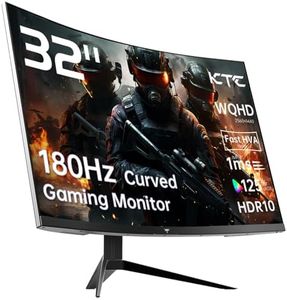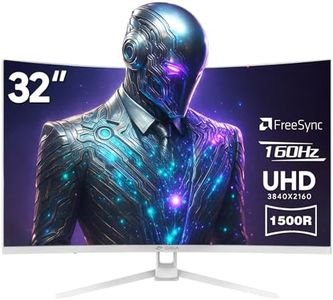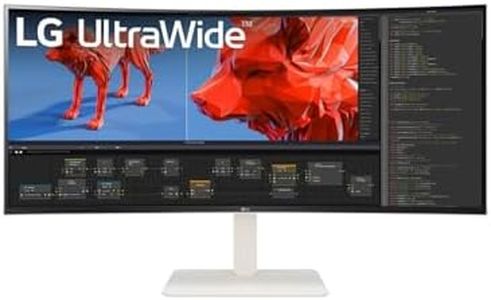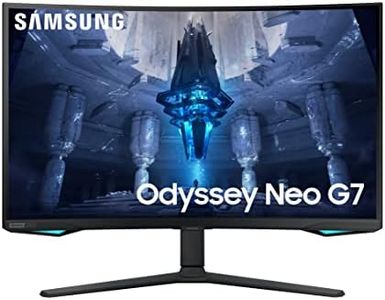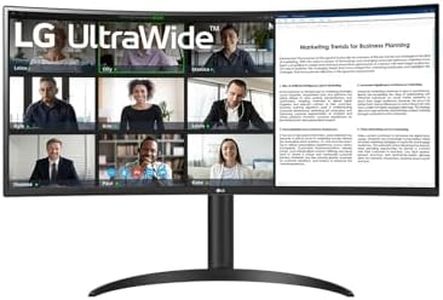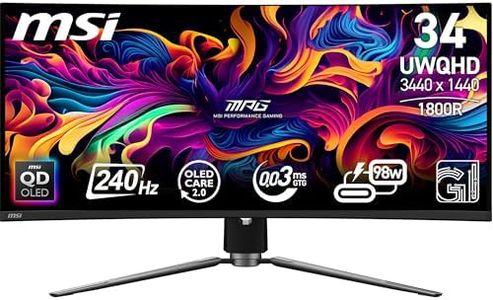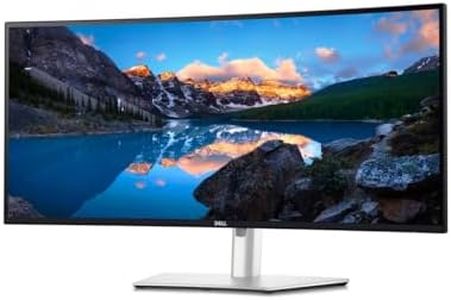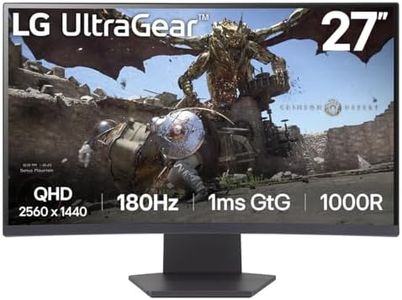We Use CookiesWe use cookies to enhance the security, performance,
functionality and for analytical and promotional activities. By continuing to browse this site you
are agreeing to our privacy policy
10 Best Curved Monitors
From leading brands and best sellers available on the web.Buying Guide for the Best Curved Monitors
Curved monitors have become popular for both work and entertainment, offering a more immersive viewing experience by gently wrapping the screen around your field of vision. When choosing a curved monitor, it's important to understand how its specifications affect comfort, performance, and usability. The best approach is to start by thinking about your primary use: Are you buying it for gaming, productivity, watching movies, or a mix? This will help you prioritize certain features and specs that matter most for your experience.Curvature (Radius)Curvature is measured in millimeters (for example, 1500R, 1800R, 3000R), which describes the radius of the curve if the monitor formed a complete circle. The lower the number, the more pronounced the curve. This spec is important because it affects how immersive the experience feels and how easy it is for your eyes to follow content from edge to edge. Tight curvatures (like 1500R) make the screen feel more wrapped around you, but might be too intense for some people, especially for general work. Mild curves (like 3000R) are more subtle and suitable for large screens and multitasking. For gaming or movie watching, a tighter curve can enhance immersion, but if you plan on working with documents or using it for professional tasks, you might prefer a gentler curve.
Screen SizeScreen size refers to the diagonal measurement of the display, usually given in inches. Bigger screens provide a more immersive experience and more space for multitasking, but require you to sit farther back to see everything comfortably, especially with a pronounced curve. Typical curved monitor sizes range from 27 inches up to ultra-wide formats over 49 inches. For gaming and movies, a larger screen can be great, whereas for productivity, a moderate size may be easier to manage on a desk. Choose the screen size based on your desk space and how far you can comfortably sit from the monitor.
ResolutionResolution measures how many pixels are displayed on the screen, usually shown as width × height (such as 1920x1080 for Full HD, 2560x1440 for QHD, or 3840x2160 for 4K). Higher resolution means sharper and clearer images, which is especially noticeable on larger screens. For smaller curved monitors (up to 32 inches), Full HD can suffice for basic tasks, but QHD gives you crisper visuals for work and play. For ultra-wide or very large curved monitors, QHD or 4K will deliver the detail and clarity needed to make the most of the screen real estate. Pick resolution based on how sharp you want the image and how much detail you need for your primary activities.
Refresh RateRefresh rate, measured in Hertz (Hz), tells you how often the image is updated every second. This is most important for fast-moving content like gaming. A refresh rate of 60Hz is standard for regular work and movies, but 120Hz or 144Hz and higher is favored by gamers because it makes motion look smoother and can give a competitive edge. If you're mainly using the monitor for productivity or streaming videos, a standard refresh rate is fine. For gaming, consider a higher refresh rate to get the best experience.
Panel TypeCurved monitors usually use VA (Vertical Alignment) or IPS (In-Plane Switching) panels. VA panels are common in curved monitors and are known for good contrast and deep blacks, making them excellent for movies and games with dark scenes. IPS panels have better color accuracy and wider viewing angles, making them suitable for photo/video editing and creative work. Your main use should guide this choice—go for IPS if color quality and viewing angle matter most, and VA for contrast and immersive visuals.
Aspect RatioAspect ratio determines the shape of the screen and how much horizontal space you get. Standard monitors use 16:9, while ultra-wide models use ratios like 21:9 or even 32:9. Ultra-wide curved monitors are great for multitasking, as they offer more space for windows side by side, and for immersive gaming or movies. However, some applications and games may not fully support ultra-wide ratios, so think about the programs you use most before opting for an extremely wide aspect ratio.
ConnectivityConnectivity refers to the types and numbers of ports the monitor has, such as HDMI, DisplayPort, USB, and sometimes USB-C. This is important so you can connect the monitor to your computer or other devices without needing extra adapters. Consider what devices you want to hook up and make sure the monitor has enough and the right kinds of ports for your setup.

